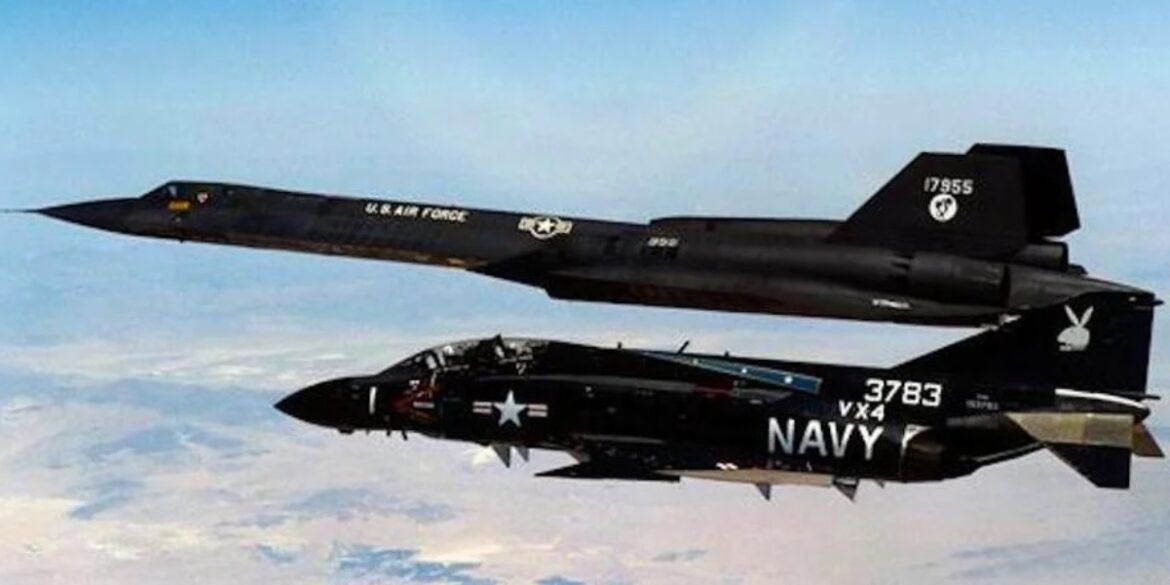‘I watched in amazement as the Vc circle [on the radar display], which told us the relative closing velocity of the target, started rapidly winding up far higher than I had ever seen it before,’ Jerry Hart, US Navy F-4B Phantom II pilot
The SR-71 Blackbird collected intelligence in some of the world’s most dangerous environments during its 24 years of operation. The Blackbird is still the only US Air Force (USAF) aircraft never to lose a crew member, either in the air or on the ground, having successfully avoided all 1,000 missiles fired at it.
The Blackbird was built to fly at high speeds and altitudes; in fact, it could cover 100,000 square miles of the Earth’s surface per hour from 80,000 feet. As we have already pointed out, it was therefore very difficult to get a radar lock on it, for any hostile fighter as well as for the best American fighters.
A claim confirmed by Jerry Hart, a former US Navy F-4B Phantom II pilot;
‘During the Vietnam War, the Navy kept at least 2 fighters airborne in the northern Gulf of Tonkin 24/7/365, flying a mission called BARCAP (Barrier Combat Air Patrol) as part of the first line of defense for the carrier(s) to the south, operating on Yankee Station and sometimes Dixie Station. The other part of the first line of defense was provided by a heavily armed guided missile cruiser, radio callsign “Red Crown” whose Air Intercept Controllers (AICs) controlled the fighters and any others operating in the northern Gulf.
‘The BARCAP was usually a very boring mission of drilling around in a racetrack pattern east of communist North Vietnam and south of the island of Hainan owned by communist China for several hours until relieved on station by another section (2 aircraft) of fighters.
‘I was leading a section of F-4Bs on BARCAP one bright, severe, clear Chamber of Commerce day when “Red Crown” gave us a heads-up call of a friend who would be coming at us from the north. That could only mean one thing. An SR-71 would be exiting Chinese airspace from over Hainan Island coming right over us.
‘We were cruising around saving gas at about 25,000 feet. I turned us toward the north to see if we could pick him up on radar and possibly see him as he passed overhead. After running the antenna up in elevation as far as it would go my RIO was able to paint a target and quickly locked it up.
‘I watched in amazement as the Vc circle [on the radar display] which told us the relative closing velocity of the target started rapidly winding up far higher than I had ever seen it before. Then the B trace, which indicated the target’s position relative to the nose of our aircraft, began to dither back and forth rapidly before slamming to the side of the scope and the screen went completely black. We never could get it to work again.’
Hart concludes;
‘We thought we could at least see it fly overhead as it passed us. Nope. Too high, even for us to see with the naked eye. I had once seen another aircraft at 56 nautical miles verified by radar so I knew my eyes weren’t the problem.’
Photo by U.S. Navy and U.S. Air Force

